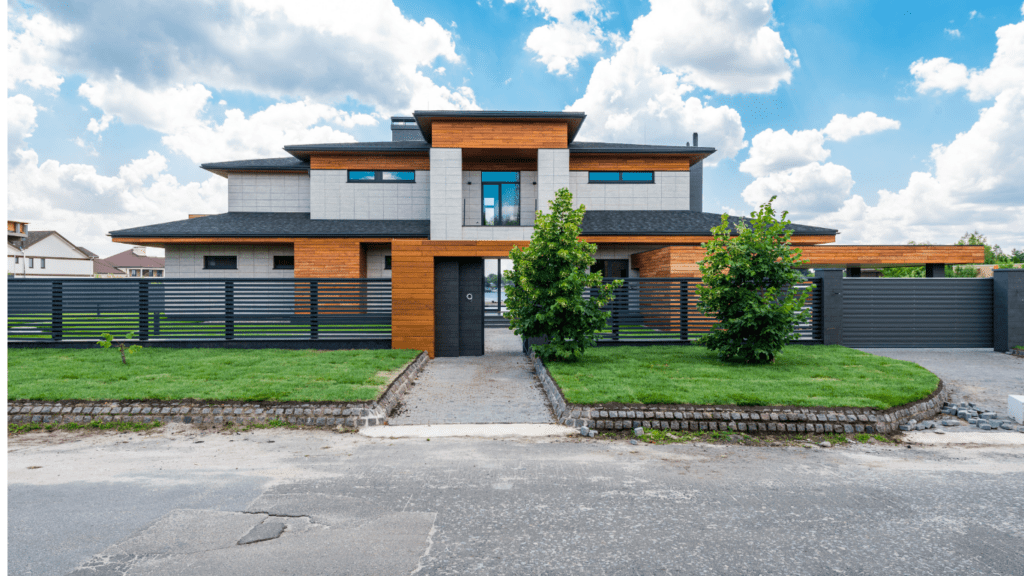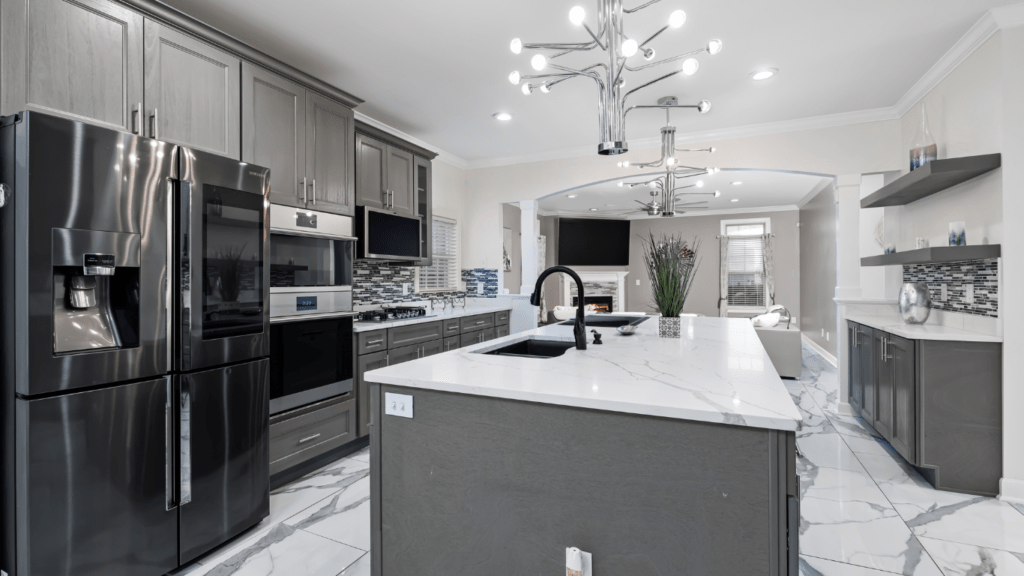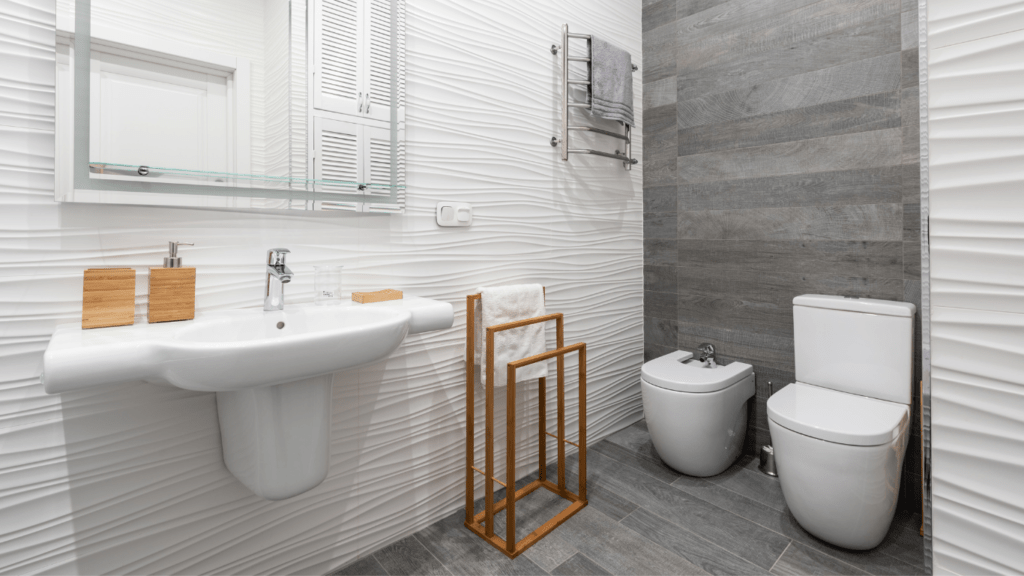Understanding Curb Appeal
Curb appeal refers to the attractiveness of a property when viewed from the street. Potential buyers often make snap judgments based on their first impressions, so it’s crucial for a home’s exterior to look inviting and well-maintained. Even if selling isn’t the goal, improving curb appeal can instill pride and satisfaction for homeowners.
Several factors contribute to curb appeal. These elements include landscaping, house color, entranceway, and general maintenance. Each plays a role in creating a cohesive and appealing exterior.
Landscaping
Landscaping significantly impacts curb appeal. Well-manicured lawns, trimmed hedges, and vibrant flowers (e.g., roses, tulips) add visual interest and convey meticulous care. Consider adding garden beds or decorative elements like stone pathways to enhance the landscape.
House Color
House color also affects curb appeal. Neutral tones (e.g., beige, gray) often appeal to a broad audience, whereas bold colors (e.g., teal, red) can make a home stand out. When selecting colors, consider the style of the house and neighborhood trends to maintain harmony with the surroundings.
Entranceway
The entranceway serves as the focal point of curb appeal. Ensuring the front door is in good condition and perhaps freshly painted can make a big difference. Adding elements such as a welcome mat or potted plants at the entrance can create a warm and inviting feel.
General Maintenance
- General maintenance tasks like cleaning gutters, repairing walkways, and updating lighting ensure the property looks cared for.
- Regular upkeep (e.g., replacing broken fixtures, painting touch-ups) not only enhances appearance but also prevents minor issues from escalating into significant problems.
- Understanding the components of curb appeal enables homeowners to make informed decisions on where to focus their renovation efforts.
- Improving curb appeal isn’t just about aesthetics; it also involves essential upkeep and thoughtful enhancements that contribute to a property’s overall charm and value.
Assessing Your Home’s Exterior

Curb appeal starts with a careful assessment of your home’s exterior. This helps identify areas needing improvement and highlights attractive features.
Inspecting Surfaces
Thoroughly inspect all external surfaces, including walls, windows, and the roof. Check for visible damage, such as cracks, peeling paint, or mold. Evaluate the condition of siding; re-paint or replace it if needed. Clean windows regularly to ensure they sparkle. Inspect the roof, looking for missing shingles and debris buildup. Addressing these issues promptly helps maintain the home’s appearance.
Evaluating Landscaping
Examine the current state of your landscaping, which includes plants, trees, and shrubs. Ensure lawns are mowed, edged, and free from weeds. Prune trees and shrubs to maintain their shape and health. Add colorful flowers to improve visual interest. Consider hardscaping features like pathways or garden borders to enhance structure and aesthetic appeal. Remember, well-maintained and thoughtfully arranged landscaping significantly boosts your home’s curb appeal.
Key Renovation Tips
Whether selling or enjoying your home, enhancing curb appeal is essential. Here are some key renovation tips to elevate your property’s exterior.
Fresh Paint and Siding
Applying fresh paint is one of the easiest ways to refresh your home’s look. Choose neutral colors, as they tend to have broad appeal. Repainting trims and doors can also make a big impact. Inspect the siding for damages like cracks or peeling, which detract from the appearance. Repairing or replacing damaged panels ensures your home looks well-maintained.
Upgrading Windows and Doors
Consider replacing outdated windows. Modern, energy-efficient models improve both appearance and functionality. Windows with decorative grids or unique shapes can add charm. The front door serves as a focal point. Opt for a stylish, sturdy door, and enhance it with features like a brass knocker or a fresh coat of bold paint.
Improving Landscaping
A well-manicured lawn and thoughtful landscaping significantly boost curb appeal. Mow the lawn regularly and trim hedges. Planting vibrant flowers in garden beds or pots adds color and interest. Incorporate hardscaping features like paths or retaining walls to create structure and additional visual elements.
Adding Outdoor Lighting
Outdoor lighting enhances safety and aesthetics. Illuminate pathways with solar or LED lights. Install fixtures around entryways and garage doors for better visibility. Accent lighting can highlight architectural features or landscape elements, making your home stand out, even at night.
Budget-Friendly Enhancements
Enhancing a property’s curb appeal doesn’t need to break the bank. I’ve gathered some effective tips that you can implement without spending a fortune.
DIY Projects
Tackling do-it-yourself projects can save significant money while still achieving impressive results. I recommend starting with simple tasks:
- Painting the Front Door: A fresh coat of paint on the front door, using a bold or classic color, can instantly update your home’s look.
- Installing Window Boxes: Adding window boxes with colorful flowers boosts charm without high costs. Ensure they’re securely attached and regularly maintained.
- Creating a Stone Pathway: Lay stones or pavers to form a neat pathway leading to your entrance. This adds structure and elegance.
Cost-Effective Materials
Using cost-effective materials can enhance curb appeal without a hefty price tag. Consider these options:
- Gravel for Driveways: Opt for gravel instead of paving. It’s affordable, easy to maintain, and provides a clean, polished look.
- Mulch for Landscaping: Apply mulch to flower beds to improve soil quality and keep weeds at bay. It’s inexpensive and gives a tidy appearance.
- Vinyl Siding: If the house’s exterior needs a refresh, vinyl siding is a budget-friendly alternative to more expensive materials like wood or brick.
Employing these budget-friendly enhancements can significantly elevate your home’s curb appeal while keeping expenses under control.
Professional Help vs. DIY
Choosing between hiring professionals and taking the DIY route can significantly impact your curb appeal renovation project. Both options offer their unique advantages.
Benefits of Hiring Professionals
Professionals bring experience and expertise to the table, ensuring high-quality results. They possess specialized tools and skills that improve efficiency and precision. For instance, a professional landscaper understands plant placement, soil types, and maintenance needs better than most homeowners. Contractors can quickly tackle complex projects, such as installing a new roof or replacing old windows. Hiring experts reduces risks of errors that might escalate costs if not handled correctly. They can also provide warranties on their workmanship.
When to Take the DIY Route
DIY projects offer a cost-effective alternative for budget-conscious homeowners. Simpler tasks like painting the front door, planting flowers, and adding mulch to garden beds can be easily managed without professional help. DIY gives you creative control over the project, allowing personalized touches. It’s also a rewarding experience, providing a sense of accomplishment when you see the results of your hard work. Choosing DIY for manageable tasks frees up your budget for other significant upgrades that may require professional intervention, like electrical work or major structural changes.
Seasonal Considerations
When planning renovations to enhance curb appeal, it’s crucial to consider the season. Different times of the year offer unique opportunities and challenges for various projects.
Spring and Summer Renovations
Spring and summer are ideal for exterior paint jobs due to favorable weather. Warm temperatures help paint adhere properly, reducing the risk of peeling. Planting flowers and shrubs in spring ensures they thrive throughout the year. Summer is perfect for installing decks and patios, maximizing outdoor leisure spaces. Regularly mowing the lawn and trimming hedges during these months keeps the property looking pristine.
Fall and Winter Projects
Fall is great for preparing the garden for the next growing season. Apply mulch and plant perennials that flourish in cooler weather. Clean and repair gutters to handle winter snow. Winter is perfect for indoor projects like replacing windows and doors, which can improve energy efficiency. Apply weatherstripping and insulation to keep the home warm and reduce energy costs.



 Wesleyero McGill – Founder & CEO
Wesleyero McGill is the visionary behind Castle Shelf House, bringing over a decade of experience in home renovation and design. His passion for creating beautiful, functional spaces has led him to establish this platform, where he shares the latest trends in interior and exterior design. As Founder and CEO, Wesleyero is dedicated to offering expert advice on furniture placement, home styling, and renovation, helping homeowners transform their spaces with ease and confidence.
Wesleyero McGill – Founder & CEO
Wesleyero McGill is the visionary behind Castle Shelf House, bringing over a decade of experience in home renovation and design. His passion for creating beautiful, functional spaces has led him to establish this platform, where he shares the latest trends in interior and exterior design. As Founder and CEO, Wesleyero is dedicated to offering expert advice on furniture placement, home styling, and renovation, helping homeowners transform their spaces with ease and confidence.
